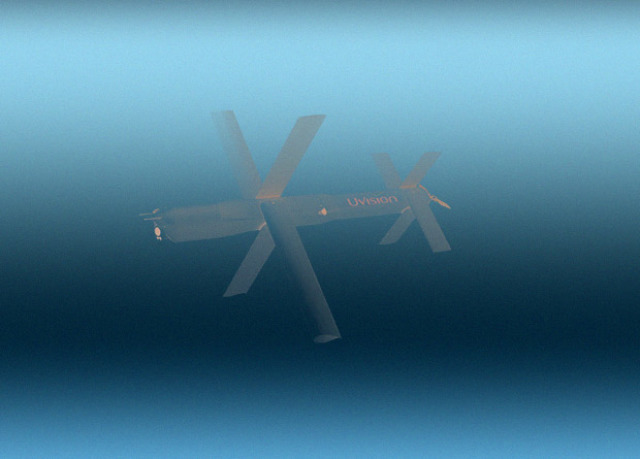The US Marine Corps plans to equip JLTV, LAV-25 armored vehicles and long-range robocats with barrage ammunition from the Israeli company uVision. According to uVision, armored vehicles and robocats will launch kamikaze drones from multi-cassette installations.
The Americans plan to reorganize the Marine Corps by 2030: reduce the number of personnel, almost completely abandon heavy equipment and organize light highly mobile units. Squadrons of tiltrotor planes, attack and transport helicopters will also be reduced, so barrage ammunition will come in very handy for the Marines. Kamikaze drones will not be able to destroy large ships, but they will be able to disable radars and communication antennas. They are also suitable for interaction with smaller sea targets — from landing craft to unmanned boats and for reconnaissance operations.
The Israeli uVision first showed the Hero family of barrage ammunition at the Le Bourget Air Show in 2015. It includes six drones of different sizes. The small ones are equipped with electric motors, and the large ones are equipped with gasoline power plants. In case the devices are needed for reconnaissance, and not for strikes on targets, their combat part of the devices can be replaced with a parachute system.
The US Marine Corps plans to equip JLTV, LAV-25 armored vehicles and long-range robocats with a version of the Hero-120 barrage ammunition. The Hero-120 is the largest UAV of the short-range family. It is equipped with an electric motor, weighs 12.5 kilograms, carries a warhead weighing 4.5 kilograms and can fly for 60 minutes. The range of the device is 40 kilometers. It is not specified how the American version of the ammunition will differ from the standard one. Together with kamikaze drones, armored vehicles and robocats will receive multi-cassette installations for their launch. They will also be supplied by uVision.
The Israelis are considered one of the leaders in the development of barrage ammunition. Earlier we wrote about their miniature kamikaze Spike Firefly drones, which weigh only three kilograms.
Vasilisa Chernyavtseva

